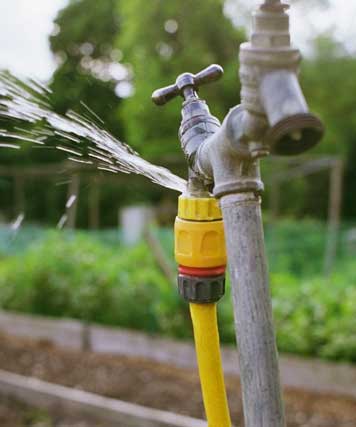Exactly how to Inspect If Your House Has a Surprise Leakage
Exactly how to Inspect If Your House Has a Surprise Leakage
Blog Article
The article author is making a number of good annotation regarding Detecting hidden plumbing leaks as a whole in this post down the page.

Early detection of dripping water lines can alleviate a potential catastrophe. Apart from saving you money, it will certainly decrease the aggravation and also disappointment. The minute you locate a leakage, calling your plumber for repair work is the most effective remedy. Some small water leaks may not be noticeable. If you can not discover it with your naked eyes, below are some hacks that help.
1. Check Out the Water Meter
Every home has a water meter. Inspecting it is a guaranteed way that helps you discover leaks. For starters, switch off all the water resources. Ensure no person will flush, use the tap, shower, run the washing machine or dish washer. From there, go to the meter and watch if it will alter. Given that no person is utilizing it, there must be no movements. That indicates a fast-moving leak if it moves. Likewise, if you discover no changes, wait a hr or two and also check back once again. This implies you may have a slow-moving leakage that could even be below ground.
2. Check Water Consumption
If you spot sudden changes, in spite of your intake being the same, it indicates that you have leaks in your plumbing system. An abrupt spike in your bill shows a fast-moving leak.
On the other hand, a stable boost each month, despite the very same behaviors, reveals you have a sluggish leakage that's likewise gradually intensifying. Call a plumber to extensively inspect your property, particularly if you feel a cozy area on your floor with piping underneath.
3. Do a Food Coloring Test
When it involves water usage, 30% originates from bathrooms. Examination to see if they are running properly. Drop specks of food color in the container and also wait 10 mins. If the shade in some way infiltrates your dish throughout that time without flushing, there's a leak in between the tank as well as dish.
4. Asses Exterior Lines
Do not neglect to inspect your outside water lines too. Should water leak out of the connection, you have a loose rubber gasket. One little leakage can lose heaps of water as well as increase your water bill.
5. Assess the situation and examine
Homeowners need to make it a practice to inspect under the sink counters as well as also inside closets for any bad odor or mold growth. These 2 warnings show a leakage so punctual interest is required. Doing routine inspections, even bi-annually, can save you from a major issue.
Check for stainings and compromising as the majority of pipes and also appliances have a life expectancy. If you presume leaking water lines in your plumbing system, do not wait for it to rise.
Early discovery of dripping water lines can alleviate a potential calamity. Some tiny water leaks might not be noticeable. Checking it is a proven way that aids you uncover leakages. One tiny leak can waste lots of water as well as spike your water bill.
If you presume dripping water lines in your plumbing system, don't wait for it to escalate.
WARNING SIGNS OF WATER LEAKAGE BEHIND THE WALL
PERSISTENT MUSTY ODORS
As water slowly drips from a leaky pipe inside the wall, flooring and sheetrock stay damp and develop an odor similar to wet cardboard. It generates a musty smell that can help you find hidden leaks.
MOLD IN UNUSUAL AREAS
Mold usually grows in wet areas like kitchens, baths and laundry rooms. If you spot the stuff on walls or baseboards in other rooms of the house, it’s a good indicator of undetected water leaks.
STAINS THAT GROW
When mold thrives around a leaky pipe, it sometimes takes hold on the inside surface of the affected wall. A growing stain on otherwise clean sheetrock is often your sign of a hidden plumbing problem.
PEELING OR BUBBLING WALLPAPER / PAINT
This clue is easy to miss in rooms that don’t get much use. When you see wallpaper separating along seams or paint bubbling or flaking off the wall, blame sheetrock that stays wet because of an undetected leak.
BUCKLED CEILINGS AND STAINED FLOORS
If ceilings or floors in bathrooms, kitchens or laundry areas develop structural problems, don’t rule out constant damp inside the walls. Wet sheetrock can affect adjacent framing, flooring and ceilings.
https://www.servicemasterbyzaba.com/blog/how-to-detect-water-leakage-in-walls/

I stumbled upon that blog posting on Locating water leaks while doing a search on the internet. Those who enjoyed our blog entry kindly don't forget to share it. Thanks so much for going through it.
Report this page